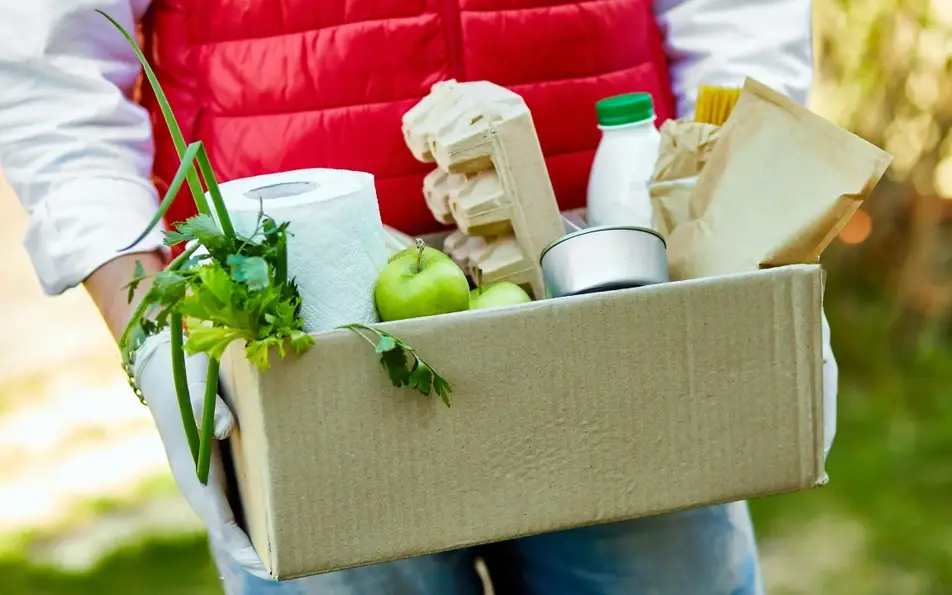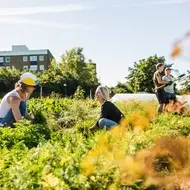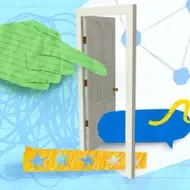What is a Mutual Aid Network?

The COVID-19 crisis has given us plenty of cause for concern, but there’s also a lot to be optimistic about. Communities around the world have been uniting via mutual aid networks—grassroots, volunteer-run local initiatives—to connect those who can help with those who need help.
Here’s a rundown of what mutual aid groups are, how they operate, and how you can get involved.
What is a mutual aid network?
It may come as no surprise that neighbors have been helping neighbors for as long as there have been neighbors. In fact, the concept of mutual aid—the bartering of skills—dates back millennia. As communities became more complex, “mutual benefit societies” provided members with resources ranging from food and shelter to healthcare and medicine. In the United States, mutual aid networks became prevalent around the turn of the 20th century—particularly in underserved populations during times of great need, such as the “mutual benefit societies” that made health care and life insurance available to its members during the Great Depression.
The COVID-19 crisis has precipitated a spike in mutual aid networks, and though groups vary in size and goals, the overall purpose and philosophy is the same. “Mutual aid groups are about organizing…under the notion that everybody has something to contribute, and everybody has something they need,” says Simone Norman, an organizer for Crown Heights Mutual Aid in Brooklyn, New York City. “It’s matching what you have to the folks who need it.”
How do mutual aid networks work?
Mutual aid networks operate in ways as varied as the communities they serve. Many of the networks that started as a result of the current pandemic began as community-specific Google Docs, forms, and spreadsheets collecting the contact information of volunteers and those who needed assistance. As the number of groups grew, master mutual aid network spreadsheets were created to keep all the information organized.
Many groups also started using applications like Facebook, WhatsApp and Slack in order to build an infrastructure capable of handling the rising number of volunteers and requests for aid. “It started with a few folks slapping together basic infrastructure, and ballooned into an almost 900-strong operation,” Simone says. “It was very organic. We started with the barest bones of it, of how to connect a resource to a person in need, [and] once that system was in place, it exploded from there.”
No matter how big the groups get, volunteers continue to rise to the challenge, offering up their expertise to help build websites, handle finances, and draft press releases. Every day, mutual aid networks field donations of face masks or food items; deliver groceries and prescriptions to immunocompromised neighbors; volunteer at food pantries and soup kitchens; and create phone trees to check in on people who are sick, elderly, or living alone. These networks are all volunteer-run, and the spirit of community and solidarity flows through every aspect of their decision-making process. “We try to be as horizontal as possible while still having a clear process,” says Scott Heins, another organizer for Crown Heights Mutual Aid. “No one really ‘runs’ it.”
Join or start a mutual aid network
If you’re interested in volunteering with a mutual aid network, chances are that there’s already one near you! To get started, search Idealist’s organization database to find and connect with your local network. Do some research to see where people in your community are connecting and communicating. Is there a group on Facebook, WhatsApp, or Slack for your area? It's also possible that multiple groups have formed in your community that don’t know of one another, and you can be the one to bring them all together.
If you are starting a mutual aid group, it’s important to consider which platform or platforms best suit the demographic you’re aiming to help. Crown Heights Mutual Aid, for example, operates on a Slack channel as well as on Facebook, with different groups of people tending toward one or the other. “The Facebook group [has] more members than the Slack,” Scott says. “It’s a lot of people talking to people, people keeping each other informed as to what’s going on in the neighborhood. [But the] rapid-response delivery work, that has to happen on Slack.”
Most importantly, don't be afraid to ask for help! To get Crown Heights Mutual Aid off the ground, Scott and Simone had a lot of help from other mutual aid groups nearby. “I spent a little time on the Bed Stuy Strong Slack,” Scott says. “We’ve been able to build quickly because we’ve had people very generously give us advice.”
The benefits of mutual aid networks
Despite the difficulties many of us are experiencing during the COVID-19 pandemic, the sense of solidarity fostered by mutual aid groups has been a source for optimism.
“The most rewarding thing is when we have helped someone and then they have decided to get involved as well,” Scott says. “Mutual aid isn’t about bringing the most amazing resume to the table. It’s not about having the biggest bank account. It’s not even about having the best bike or the biggest car to carry the most groceries. It’s about how well you can help kickstart and grow a culture with a feeling of shared purpose to help those who are in need. That’s what gives mutual aid its power.”
In such trying times, mutual aid networks have proven that no matter the challenge, nothing is insurmountable if we work together. Join or start a mutual aid group today to step up and lend a hand in your community.
Angel uses his skills as a storyteller to support and inspire job seekers and aspiring social-impact professionals.






